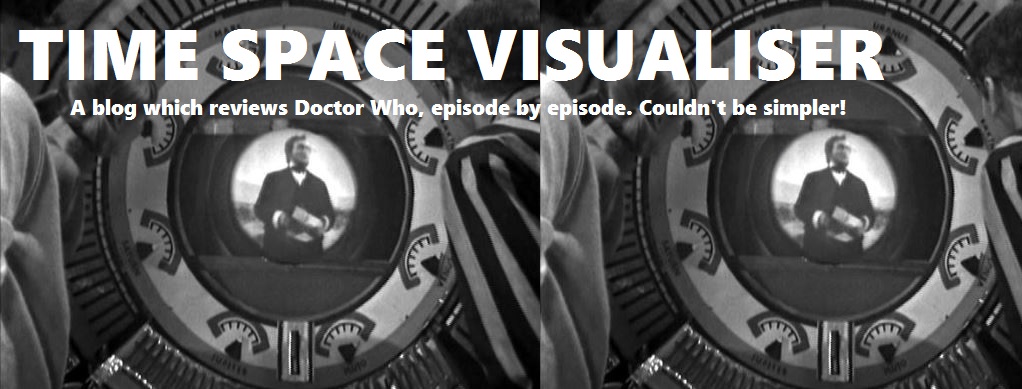The one where Romana visits a planet ravaged by the Nimon...
It's the last episode of this story, as well as the last episode of Season 17. It's also the last episode made in the 1970s, the last episode produced by Graham Williams, the last episode script edited by Douglas Adams, the last episode featuring David Brierley as the voice of K-9, the last episode scored by Dudley Simpson, the last episode to feature the diamond logo, the last episode to feature the original Tom Baker titles from 1974, and the last episode to use the Delia Derbyshire arrangement of the theme tune. It's also the last episode to see Tom Baker wearing his original multi-coloured scarf, and the last Fourth Doctor episode to crack 10 million viewers (or get anywhere near it). That's a lot of lasts.
Of course, it wasn't planned to be the last of any of these things, but following the loss of the sixth and final story of Season 17, Shada, thanks to industrial action, The Horns of Nimon inherited them all. I won't be reviewing Shada on this blog because it was never finished or transmitted in the way it would have been at the time. To all intents and purposes, Shada was aborted and only forms part of the Doctor Who canon thanks to subsequent recreations in audio and animated form. I think I'd find it hard to review an audio Shada or cartoon Shada in the same context as I have the rest of the series, so I'll leave it to one side, just as happened back in 1979.
It's the last episode of this story, as well as the last episode of Season 17. It's also the last episode made in the 1970s, the last episode produced by Graham Williams, the last episode script edited by Douglas Adams, the last episode featuring David Brierley as the voice of K-9, the last episode scored by Dudley Simpson, the last episode to feature the diamond logo, the last episode to feature the original Tom Baker titles from 1974, and the last episode to use the Delia Derbyshire arrangement of the theme tune. It's also the last episode to see Tom Baker wearing his original multi-coloured scarf, and the last Fourth Doctor episode to crack 10 million viewers (or get anywhere near it). That's a lot of lasts.
Of course, it wasn't planned to be the last of any of these things, but following the loss of the sixth and final story of Season 17, Shada, thanks to industrial action, The Horns of Nimon inherited them all. I won't be reviewing Shada on this blog because it was never finished or transmitted in the way it would have been at the time. To all intents and purposes, Shada was aborted and only forms part of the Doctor Who canon thanks to subsequent recreations in audio and animated form. I think I'd find it hard to review an audio Shada or cartoon Shada in the same context as I have the rest of the series, so I'll leave it to one side, just as happened back in 1979.
















